Retention is critical when working with LATAM developers. Why? Keeping talent is cheaper than hiring new developers, and even a 5% increase in retention can boost profits by up to 95%. The LATAM software market is growing fast, expected to hit $15.36 billion by 2029, with 2 million developers in the region by 2024.
Here’s what matters most to LATAM developers:
- Pay: 87% rank compensation as their top priority.
- Flexibility: 62% value flexible hours, much higher than U.S. developers.
- Growth: 74% consider career advancement a must.
- Work-Life Balance: Remote work and flexibility are key.
Quick Wins for Retention:
- Offer competitive salaries (e.g., $35,000–$45,000 for senior roles).
- Provide growth opportunities like training and mentorship.
- Build team connections with regular check-ins and cultural inclusivity.
- Use data-driven tools to track retention and engagement metrics.
Key Stats:
- Only 42% of developers stay active after one month.
- Top companies achieve monthly churn rates below 1%.
- Engaged teams are 21% more profitable.
This guide dives into strategies, tools, and metrics you can use to improve retention and build stronger teams. Let’s get started.
Setting Up Analytics Systems
Analytics Tool Selection
Choose analytics tools that effectively track retention. For reference, leading SaaS companies boast a median NDR of around 106%.
| Analytics Platform | Primary Focus | Key Features | Best For |
|---|---|---|---|
| Contentsquare | User Behavior | Insights into user behavior and real-time feedback | Large Teams |
| HubSpot | Unified CRM | CRM with performance tracking | Mid-size Organizations |
| ActiveCampaign | Automation | Engagement tracking and automation for communication | Small-to-Medium Teams |
| Zendesk | Support Metrics | Tools for customer support and response time management | Service-oriented Teams |
Once you’ve selected your tools, the next step involves configuring metrics to gain actionable insights.
Tracking Setup Guide
After picking the right tools, setting up effective tracking requires focusing on the right metrics and ensuring a precise configuration.
- Core Metrics to Implement
Track essential indicators like:- Developer satisfaction scores (CSAT: target range of 75-85%)
- Team engagement levels
- Performance indicators
- Response time metrics
- Advanced Metrics for Retention
Advanced metrics provide deeper insights into retention and engagement trends.
“If you have a good retention rate, then you don’t have to work as hard to acquire customers over and over again. Positive brand interactions create a flywheel – when you give your customers a great experience, they’ll come back for more and you’ll get to understand them better. This customer data then allows you to build more relevant experiences.”
- Benchmarks to Guide Success
Use industry standards to set realistic and competitive benchmarks:- Monthly churn rate: 3-8% is typical, with top performers achieving <1%
- Engagement rate: 28.2% is the industry average
- Developer satisfaction: Aim for a CSAT score of 75-85%
- Tool Integration
Use automation platforms like Zapier to connect tools and streamline monitoring of engagement, performance, and response times.
Main Retention Metrics
Basic Retention Rates
Retention rates offer a clear picture of how developer engagement changes over time. In the LATAM developer workforce, data reveals a steady decline: about 42% of developers remain active one month after onboarding, which drops to 27% by the third month.
| Timeframe | Average Retention Rate | Focus Areas |
|---|---|---|
| 1 Month | ~42% | Integration and initial onboarding engagement |
| 3 Months | ~27% | Sustaining satisfaction and building stability |
These trends highlight the importance of addressing early engagement and long-term satisfaction to minimize churn and maximize developer value.
Churn and Developer Value
Monitoring churn is critical when working with LATAM developers. A monthly churn rate of 3–7% is generally manageable, but top-performing companies aim for rates closer to 1%.
Key indicators to track include:
- Revenue Impact: Separate revenue churn from logo churn to better understand the financial effects of developer turnover.
- Engagement Levels: Keep an eye on daily and monthly active participation.
- Project Completion: Measure the success rate of completed projects.
- Team Stability: Track the average tenure of developers to gauge team consistency.
Keeping these metrics in check ensures a more stable and productive developer base.
Team Performance Metrics
To improve team performance and retention, focus on these areas:
- Professional Growth: Offer language learning opportunities (a priority for 45% of developers) and flexible scheduling (preferred by 62%).
- Career Development: Provide clear pathways for job security and advancement.
- Compensation: Ensure competitive pay and comprehensive benefits.
- Work-Life Balance: Include options for flexible hours and remote work.
5 Customer Retention KPIs You Should Be Tracking
sbb-itb-a3fbb4e
Retention Improvement Methods
These strategies focus on compensation, career growth, and team integration to help reduce employee turnover.
Offering competitive pay is a cornerstone of retention.
For LATAM developers, salaries are significantly lower compared to U.S. counterparts. For example, U.S.-based developers can earn up to $120,000 annually, while senior LATAM developers typically earn between $35,000 and $45,000 per year.
| Experience Level | LATAM Salary Range | US Equivalent | Common Benefits |
|---|---|---|---|
| Junior (0-2 years) | $36,000 – $54,000 | $75,000 – $120,000 | Health insurance, training funds |
| Mid-level (3-5 years) | $57,500 – $96,760 | $85,000 – $120,000 | Retirement plans, paid leave |
| Senior (5+ years) | $76,680 – $114,912 | $120,000 – $160,000 | Stock options, leadership programs |
A survey found that 56% of professionals in Latin America prioritize benefits when choosing jobs. Popular offerings include:
- Health insurance
- Flexible paid time off
- Medical leave
- Budgets for professional development
- Performance-based bonuses
Career Growth Options
Opportunities for advancement are critical, as 74% of LATAM professionals consider career growth a top priority. On the flip side, 63% of employees leave jobs due to a lack of growth opportunities. To address this, companies should:
- Offer certifications and specialized training
- Establish clear leadership pathways
- Provide language training programs
- Support attendance at industry conferences
- Develop mentorship initiatives
When paired with competitive compensation and strong team dynamics, these efforts can significantly improve retention.
Team Integration
Remote work is common among LATAM developers, with about 44% working for nearshore companies. Building trust and strong relationships is key to their success.
“Relationships, or relaciones, lie at the heart of Latin American work culture. Building trust and rapport is essential before diving into business goals.”
To strengthen team connections, consider these steps:
- Schedule regular video check-ins
- Host virtual coffee chats
- Celebrate local holidays together
- Use collaboration tools effectively
- Offer flexible work schedules
Interestingly, 50% of employees would accept a 5% pay cut in exchange for remote work flexibility. Regular virtual interactions and an inclusive environment can go a long way in creating a connected, motivated team.
Data-Driven Retention Planning
Improving retention strategies can significantly impact outcomes. For example, increasing retention by just 5% can raise profits by 29%-95%.
Retention programs thrive on constant evaluation and updates. Here’s how top companies approach testing:
| Company | Testing Approach | Results |
|---|---|---|
| Airbnb | Studied host behavior and booking patterns | 20% boost in host retention |
| American Express | Monitored employee performance and engagement | 12% drop in turnover |
| Netflix | Used recommendation algorithms | 75% of content viewed via recommendations |
To apply data-driven testing, focus on these steps:
- Set Clear Metrics: Monitor engagement indicators like project completion, code reviews, and team participation.
- Collect Diverse Data: Blend quantitative metrics with qualitative inputs from surveys, performance reviews, and exit interviews.
- Watch for Early Warning Signs: Spot potential turnover risks such as reduced participation, fewer code commits, missed deadlines, or less communication.
These methods help create a strong foundation for retention planning tailored to your LATAM teams.
Once you’ve tested your retention programs, compare the results with industry benchmarks to measure success:
| Metric | Average Retention Rate |
|---|---|
| All Industries | 72.5% |
| Computer Software/Tech | 86% |
To refine your analysis, segment the data by:
- Developer experience levels
- Regional pay standards
- Retention rates based on project type
- Team engagement statistics
With 77% of consumers less loyal to brands than before, it’s clear that retention strategies must remain adaptable. Focus your analytics on factors like:
- Career growth opportunities
- Work-life balance
- Project satisfaction
- Team collaboration metrics
These insights can guide you in building more effective retention programs.
After exploring retention analytics, let’s dive into another key area: effective talent management. CareMinds provides tailored services designed to keep LATAM developers engaged and committed. Here’s a breakdown of how their approach supports both hiring and retention.
CareMinds focuses on delivering top-tier hiring solutions with these standout features:
| Service Component | Details | Impact on Retention |
|---|---|---|
| Talent Vetting | Only 1% of applicants accepted | Ensures high-quality matches |
| Matching Speed | 3-day average placement | Minimizes hiring delays |
| Success Rate | 96% successful matches | Leads to better team alignment |
| Recruiter Network | 100+ independent recruiters | Expands access to talent |
Their rigorous vetting process evaluates over 1,000 pre-screened developers, focusing on both technical skills and cultural compatibility.
Contract Options
CareMinds offers flexible engagement models that prioritize retention and adaptability:
- Risk-Free Trial Period
Companies can assess developer fit during a 2-week trial, achieving a 96% match success rate. - Extended Evaluation Period
Following the trial, a 3-month conditional period allows further evaluation with simple termination or replacement options. Developers are available starting at US$31 per hour. - Long-Term Integration
After a year of successful collaboration, businesses can transition developers to full-time employees through a buyout option, offering clear career growth opportunities.
For instance, Qured utilized these services in March 2023 to develop a healthcare platform while maintaining its core development team. These flexible models align seamlessly with retention-focused strategies.
All data is sourced from verified CareMinds records.
Summary
When it comes to retaining LATAM developers, focusing on the right metrics is key. Here’s a quick breakdown of areas to track and how they influence retention:
| Focus Area | Key Metrics | Impact on Retention |
|---|---|---|
| Daily Engagement | DAU/MAU ratio, stickiness rate | Shows how satisfied and engaged developers are |
| Performance | Code quality, project delivery times | Highlights areas that need improvement |
| Team Integration | Check-in frequency, collaboration metrics | Indicates how well the team works together |
| Career Growth | Skill development progress, goal achievement | Encourages long-term commitment |
Research shows that engaged teams can increase profitability by 21% and reduce delays by 30%. Use these metrics to guide meaningful changes.
Action Steps
Based on the data, here are some actionable strategies to improve retention:
- Set Up Comprehensive Monitoring
Use project management tools to track code quality, delivery times, and team collaboration. Consistent monitoring can improve outcomes by 22%. - Create Career Growth Opportunities
Offer clear career paths with specific milestones. Providing clarity can increase productivity by 15%. - Strengthen Team Integration
Schedule monthly one-on-ones, encourage peer mentorship, and offer cultural training and localized benefits. These efforts can reduce turnover by 31%.
Additionally, 48% of employees say location flexibility is a major factor in staying with their company. Use this insight to tailor retention strategies further.
















